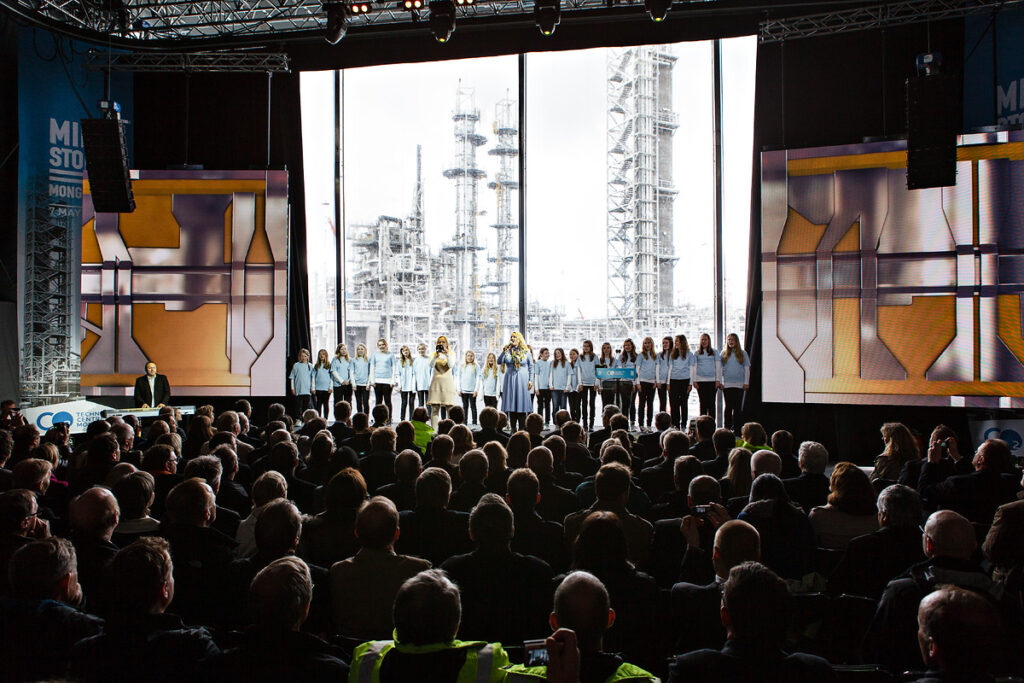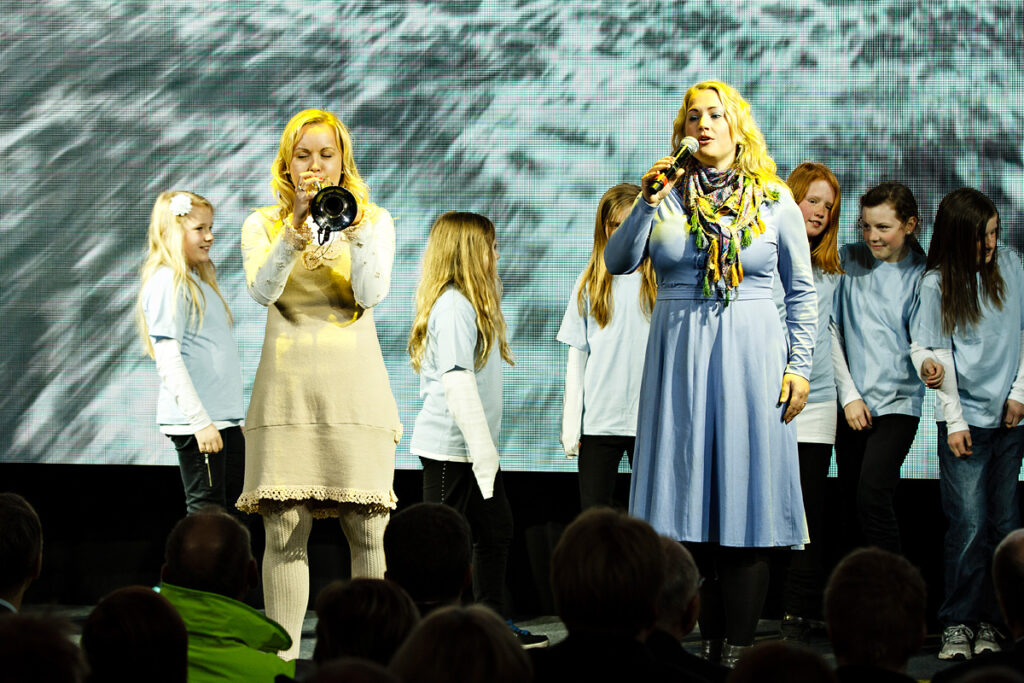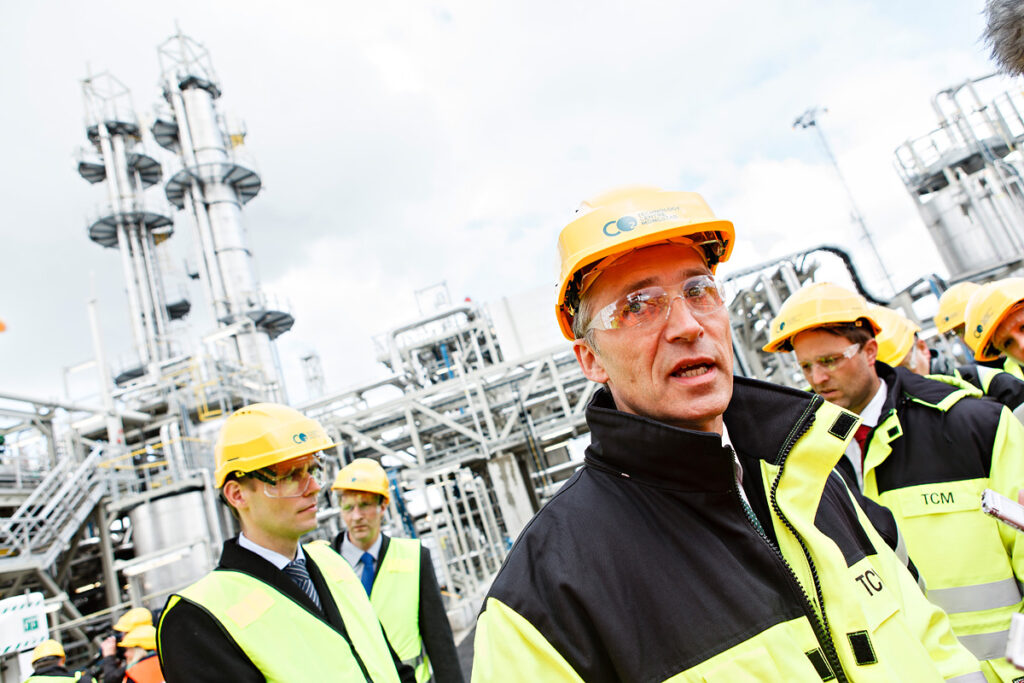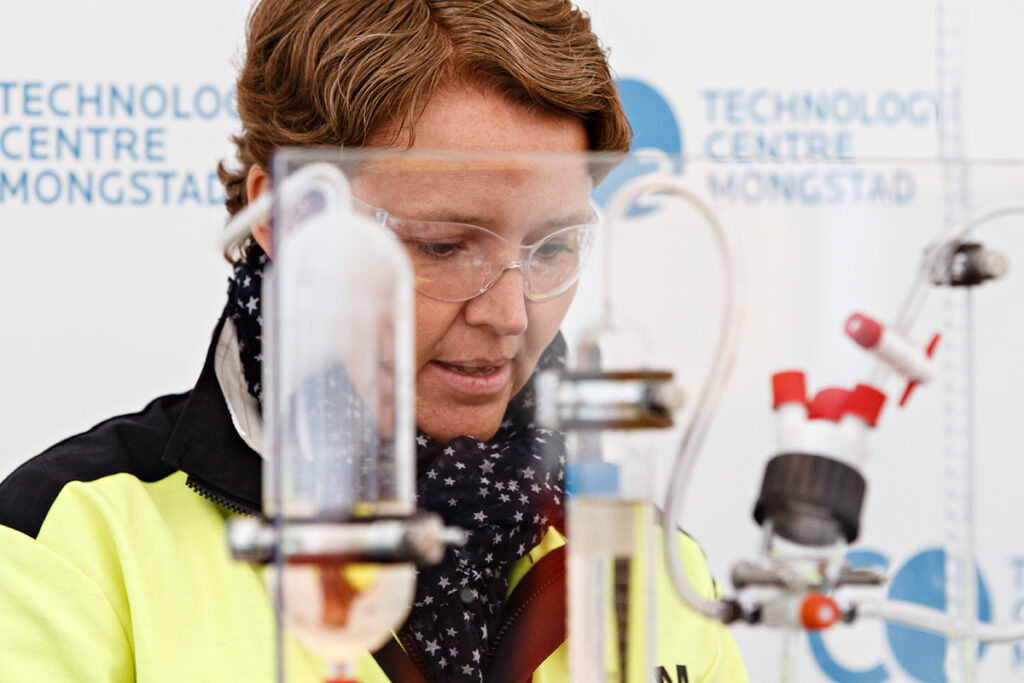China: the IKEA of the energy transition
Analysis shows that Chinese manufacturers account for 70% of the global market for solar cells and 50% for wind turbines.
Solar cell and wind turbine prices bucked a long-standing trend by rising in 2021. This is according to an analysis by Wood MacKenzie published in February.
Record commodity and transport costs
The principal reasons behind the price rise are record commodity and transport costs, supply chain issues and logistical bottlenecks. Despite this, China added a further 134 GW of renewable energy capacity in 2021, and their total capacity increased to 1,070 GW – amounting to 1/3 of total global renewable energy capacity. According to Wood MacKenzie, Chinese manufacturers now make up 70% of the global market for solar cells and 50% for wind turbines. China is even more dominant in lithium-ion battery production.
Strong domestic market
Chinese-manufactured solar cells and wind turbines also have far and away the lowest prices on the international market. Wood MacKenzie believes that China’s energy policy and economic growth going forward will create a formidable domestic renewables market, drive costs down even further and enshrine China’s continued dominant position as a global supplier of these technologies. They also point out that China is far from a global leader in other climate-related technology areas such as CCS and low-carbon hydrogen, and that these will be important areas of competition for technology suppliers in the coming years. Looking further into the future, operators outside of China may win competitive advantages around the production of next-generation fuels.
The crisis in Ukraine: New supply chain disruption on the horizon
Just as people breathed a sigh of relief at the gradually improving pandemic, the international community was hit with a new crisis.
Radical and far-reaching changes
The Russian invasion of Ukraine and the response of the international community has rapidly weakened international cooperation and trade in energy resources and other vital raw materials. The crisis has the potential to create radical and far-reaching changes in many parts of society. The longer and deeper the crisis gets, the greater the ripple effects will be for the economy and supply chains in Europe and beyond.
EU action plan
The IEA quickly released a 10-point plan for how the EU can reduce its dependence on Russian gas by up to 1/3 this year, while also reducing carbon emissions. The EU recently published its plan to wean itself off Russian fossil fuels well before 2030, while also protecting itself from high energy prices this year. The plan states that in the short-term the EU will increase its gas purchases from other suppliers and in the longer term, increase the introduction of renewable energy while phasing out fossil fuel-based energy.
High energy prices
All in all, it is reasonable to expect that energy prices in Europe will remain much higher for the foreseeable future than before the pandemic. Inflation in the EU, already high before the Ukraine crisis, has risen further and is expected to remain high going forward. As for CCS, higher energy prices will make it more expensive and less competitive compared to other climate initiatives.
Increased interest in CCS?
The desire to phase out fossil fuel-based energy more quickly in the EU may also have a direct impact on interest in CCS, especially for carbon capture from natural gas or coal. Furthermore, the coming energy shortage will mean that all energy use (including for CCS) will face stronger competition with other energy use across society. However, the adoption of CCS up to 2030 will also largely be decided by the balance the EU makes between climate issues with other needs and how much funding is available for this purpose.
Equinor’s annual ‘Energy Perspectives’ from last year offers relevant analysis and its ‘Rivalry’ scenario is a fitting comparison to the current situation. The scenario points out that energy policy is much more focused on energy independence than the economy and environment. The analyses also show that this scenario leads to greater social inequalities, lower energy efficiency, less technology development as well as higher taxes on natural resources compared to their other scenarios.
Denmark with money for CCS
Before Christmas, the Danish government gained a majority in the Folketing to support the development of a CCS market, effective from 2025.
Funds of up to DKK 16 billion
A total of up to DKK 16 billion is planned to be made available with an ambition of capturing and storing 0.4 million tonnes of CO2 from 2025, and 0.9 million tonnes from 2030. This agreement also opens the door for CO2 to be used for synthetic fuel production. The first announcement of funds is expected to take place this year.
Heavy industry and Combined Heat and Power Plants that burn waste are pointed to as relevant potential applicants.
Facts
- A timetable for the capture, transport and storage of carbon is the second part of the overall strategy for carbon capture and storage. The first part came in June.
- The Danish Climate Agreement for Energy and Industry 2020 allows for the establishment of a pool of funds of up to DKK 16 billion in two funding waves for the development of carbon capture, transport, storage.
- In the short-term, funds are available to CO2 emitters interested in carbon storage and transport etc., and who take responsibility for documenting their CO2 reductions.
- The Agreement paves the way for the implementation of CO2 reductions of 0.4 tonnes per year from 2025.
- It is supplemented by a range of long-term initiatives, which will lead to a market-based rollout of CCS in Denmark, by introducing taxes and expenditure on emissions purchases, for example.
- The agreement is also focussed on strengthening global CCS through EU regulation and promoting Denmark as a European carbon storage hub.
- In June, the Danish government and a large number of others agreed to the plan and timetable for introducing carbon storage. This is the first step in Denmark’s overall CCS strategy. DKK 210 million was set aside for GEUS to survey potential carbon storage sites.
- The timetable for carbon capture, transport and storage is a supplement to the green sub-agreement of the Finance Act 2022 agreed on by the Danish Social Liberal Party, the Socialist People’s Party, the Red-Green Alliance, The Alternative and the Christian Democrats, with DKK 2.5 billion set aside for a carbon capture funding pool. It is expected to lead to CO2 reductions of 0.5 tonnes per year from 2025.
DoE is criticized for poor financial management of CCS projects
The US Government Accountability Office has investigated the Department of Energy’s allocations and follow-up of nine major CCS demonstration projects.
In a report published in December, the U.S. Government Accountability Office (GAO) provided information on investigations into DoE funding allocations and follow-up of nine large CCS demonstration projects.
$1.1 billion in support
In total, the DoE awarded $1.1 billion in support over the period 2009-17. Of the projects supported, six were linked to power generation ($684 million) and three to industrial processes ($438 million). Of the power generation projects, only one was successfully completed (Petra Nova), but even this was closed down in 2020 after only three years in operation.
Of the industry projects, two were completed (Air Products, Texas and Archer Daniels, Illinois). The GAO has two recommendations:
- that the DoE improve its project selection and negotiation processes and
- that they be more consistent in their follow-up of projects with regards to their scope, timelines and budgets.
The recommendations were particularly aimed at flaws in the DoE’s selection of coal-fired energy projects that they believe were rushed and not completed according to proper regulations. This also covered the assessment of market related conditions to do with the prospects of coal vs. natural gas. According to the GAO, this led to substantial extra costs for taxpayers.
Edit this text area as you want, make headings and paragraphs…WEF Report; increased social inequality and a disorderly approach to climate challenges
The World Economic Forum report focuses on growing social inequalities as well as climate and environmental conditions. Different handling of the pandemic creates greater tensions within and across national borders.
This year’s World Economic Forum (WEF) Risk Report focused its attention on the consequences of increasing social inequalities as well as climate and environmental conditions. It emphasises that the pandemic, particularly the way it has been managed, has contributed to increased inequalities between countries and social classes and has led to increased tensions within and across national borders.
Difficulties build support around climate and the environment
The report points to unemployment, inflation, unstable global supply chains, increasing protectionism and geopolitical unrest as examples of these tensions. This situation makes it more difficult to build support for the coordinated measures needed to tackle major social issues such as climate and environmental change. These areas (social unrest and climate/environmental change) make up the top eight factors of the WEF’s Global Risk Factors for the world economy. The results are based on assessments from almost 1,000 international experts.
CCS and CDR are viewed as key measures
Within the field of climate change, the WEF points out that the lack of international cooperation on this issue will lead to ever-increasing tensions between countries and economic sectors. Political inaction on climate challenges will also lead to worsened climate impacts and require an even greater section of society to tackle the consequences experienced. A political desire to “ease the burden” on business life and civil society will be necessary to secure support for climate initiatives, but may also lead to a slowing down of transition that is needed. The report points out that countries with a significant dependence on fossil fuel-based energy have more to lose from the transition to renewable energy and because of this may be less willing to innovate. CCS and CDR (Carbon Dioxide Removal) are viewed as key measures for achieving climate goals, but may also end up being adopted in a way that results in “greenwashing” and weakens the structural transition that fossil fuel-based industries need to implement. The WEF points out that any route to a zero carbon emissions society will in all likelihood be quite “disorderly”.
Energy prices, CO₂ emissions and allowance prices are rising, but for how long?
This winter’s high energy prices in Europe have led to challenges in various industries, and created a general price pressure in the economy that is worrying.
Mitigation measures
Many governments have introduced mitigation measures such as tax and duty relief or price caps on energy bills – targeted specifically at those citizens vulnerable to “energy poverty”. Increased energy costs are mostly being driven by higher gas prices.
The spot price of natural gas in the UK in January was 3-4x that of the average price of the years before 2020, and energy prices have mostly followed the same trend. At the same time, gas and coal energy production has remained high over the last few months and has contributed to pressure on the carbon price, which was nearing €90 in January. However, many have pointed out that what we experienced this winter is not just being driven by short-term market fluctuations, but by long-term trends that will lead to higher global energy prices. Individual analysts have also pointed out that this development will keep driving up the carbon price and it could reach up to €150 by 2030.
The EU’s monetary policy must adapt to a new reality
In a talk held in January by the European Central Bank (ECB), it was pointed out that the energy transition that now stands before the EU will result in higher energy prices in general, and that the EU’s monetary policy must adapt to a new reality. The ECB indicates that in conjunction with high energy and carbon prices, the EU must also increase its investment in the green transition and that it must do this while protecting the most vulnerable groups in society.
It emphasises that monetary policy must be set in such a way that it prevents price increases on energy goods leading to higher inflation rates that will once again weaken the EU’s ability to achieve its societal goals. The talk stressed that, in addition to tax income from duties on carbon intensive goods from abroad (CBAM), revenues from the Emissions Trading Scheme and other taxes on emissions will increase from €14 billion in 2019, to €86 billion per year over the period 2026-2030. According to the ECB, taxes on carbon emissions will, therefore, contribute to reduced investments in fossil fuel-based energy and reduced dependence on imports over time, while also strengthening economic activity within the EU, maintaining domestic demand and leading to increased employment.
Germany must shift significantly to meet climate targets
The German report states that the country has lost momentum in development. The average reduction of greenhouse gases must be significantly increased.
The German Federal Minister for Economic Affairs and Climate Action, Robert Habeck (The Greens), presented a status report in January on how well Germany is doing in terms of its goal of carbon neutrality by 2045.
Germany is losing its pace
The report concludes that over the last few years, Germany has lost its pace of development, and that its average reduction in greenhouse gases must increase from 15 million tonnes of CO2e per year to around 40 million tonnes per year up to 2030. It further states that accelerating the expansion of renewable energy and the removal of existing barriers for them is an “absolute priority”.
Two percent for wind energy production
A statutory goal that two percent of Germany’s land should be dedicated to land-based wind energy production was also announced. It is clear that the pace of decarbonisation in the manufacturing sector also needs to increase. It states that the German government will facilitate the use of contracts for difference in order to make environmentally friendly investments profitable and to provide predictability for manufacturing. Concrete measures suggested emphasise reforming the European Emissions Trading Scheme; the rapid expansion of renewable energy and of the German energy grid, as well as hydrogen production. The report also states that German authorities have no plans to lend support to the production or use of blue hydrogen.
Trouble for natural gas and nuclear energy: Disputes over the EU taxonomy
The European Commission recently presented its long-awaited regulatory proposal as to how natural gas and nuclear energy should be treated in the EU taxonomy for sustainable finance activities.
Different forums of discussion
Energy types are essentially only entered into the taxonomy for a transitionary period in order to legitimise their role in achieving the 2050 climate goals. The content of the proposal has been known for some time and the debate has reached far and wide with clear dividing lines between countries and industries. Germany and other coal-dependent countries have pushed to include gas, but want to exclude nuclear energy, whilst France, for example, has pushed to include nuclear energy as well. Austria is one of the countries that has spoken out vehemently against both.
CCS comes into play
The European Commission has set a requirement that direct emissions from natural gas cannot exceed 270 g CO2e/kWh (a new gas-fired power plant produces c. 400 g CO2e/kWh). It also requires that any new gas-fired power plant must replace a coal-fired power plant and must also be completed before 2031. CCS will clearly be a necessary measure in meeting these emission restrictions. The European Parliament and individual member states will now debate the regulation and have four months to approve or reject the proposal.
CCS Environmental Analysis, January
On a monthly basis, Gassnova prepares an analysis of important CCS international market trends, and what drives innovation in our focus areas. Here is the analysis for January.
Trouble for natural gas and nuclear energy: Disputes over the EU taxonomy
The European Commission recently presented its long-awaited regulatory proposal as to how natural gas and nuclear energy should be treated in the EU taxonomy for sustainable finance activities.
Different forums of discussion
Energy types are essentially only entered into the taxonomy for a transitionary period in order to legitimise their role in achieving the 2050 climate goals. The content of the proposal has been known for some time and the debate has reached far and wide with clear dividing lines between countries and industries. Germany and other coal-dependent countries have pushed to include gas, but want to exclude nuclear energy, whilst France, for example, has pushed to include nuclear energy as well. Austria is one of the countries that has spoken out vehemently against both.
CCS comes into play
The European Commission has set a requirement that direct emissions from natural gas cannot exceed 270 g CO2e/kWh (a new gas-fired power plant produces c. 400 g CO2e/kWh). It also requires that any new gas-fired power plant must replace a coal-fired power plant and must also be completed before 2031. CCS will clearly be a necessary measure in meeting these emission restrictions. The European Parliament and individual member states will now debate the regulation and have four months to approve or reject the proposal.
The German government: Germany will have to drastically switch gears to achieve its climate goals
The German Federal Minister for Economic Affairs and Climate Action, Robert Habeck (The Greens), presented a status report in January on how well Germany is doing in terms of its goal of carbon neutrality by 2045.
Germany is losing its pace
The report concludes that over the last few years, Germany has lost its pace of development, and that its average reduction in greenhouse gases must increase from 15 million tonnes of CO2e per year to around 40 million tonnes per year up to 2030. It further states that accelerating the expansion of renewable energy and the removal of existing barriers for them is an “absolute priority”.
Two percent for wind energy production
A statutory goal that two percent of Germany’s land should be dedicated to land-based wind energy production was also announced. It is clear that the pace of decarbonisation in the manufacturing sector also needs to increase. It states that the German government will facilitate the use of contracts for difference in order to make environmentally friendly investments profitable and to provide predictability for manufacturing. Concrete measures suggested emphasise reforming the European Emissions Trading Scheme; the rapid expansion of renewable energy and of the German energy grid, as well as hydrogen production. The report also states that German authorities have no plans to lend support to the production or use of blue hydrogen.
Pressure in the energy markets; energy prices, carbon emissions and carbon prices increasing – but for how long?
The high energy prices experienced in Europe this winter have led to challenges across different industries and created a general pressure on prices across the economy, which has been felt by many people.
Mitigation measures
Many governments have introduced mitigation measures such as tax and duty relief or price caps on energy bills – targeted specifically at those citizens vulnerable to “energy poverty”. Increased energy costs are mostly being driven by higher gas prices.
The spot price of natural gas in the UK in January was 3-4x that of the average price of the years before 2020, and energy prices have mostly followed the same trend. At the same time, gas and coal energy production has remained high over the last few months and has contributed to pressure on the carbon price, which was nearing €90 in January. However, many have pointed out that what we experienced this winter is not just being driven by short-term market fluctuations, but by long-term trends that will lead to higher global energy prices. Individual analysts have also pointed out that this development will keep driving up the carbon price and it could reach up to €150 by 2030.
The EU’s monetary policy must adapt to a new reality
In a talk held in January by the European Central Bank (ECB), it was pointed out that the energy transition that now stands before the EU will result in higher energy prices in general, and that the EU’s monetary policy must adapt to a new reality. The ECB indicates that in conjunction with high energy and carbon prices, the EU must also increase its investment in the green transition and that it must do this while protecting the most vulnerable groups in society.
It emphasises that monetary policy must be set in such a way that it prevents price increases on energy goods leading to higher inflation rates that will once again weaken the EU’s ability to achieve its societal goals. The talk stressed that, in addition to tax income from duties on carbon intensive goods from abroad (CBAM), revenues from the Emissions Trading Scheme and other taxes on emissions will increase from €14 billion in 2019, to €86 billion per year over the period 2026-2030. According to the ECB, taxes on carbon emissions will, therefore, contribute to reduced investments in fossil fuel-based energy and reduced dependence on imports over time, while also strengthening economic activity within the EU, maintaining domestic demand and leading to increased employment.
The WEF Global Risks Report 2022: increased social inequality and a disorderly approach to climate challenges
This year’s World Economic Forum (WEF) Risk Report focused its attention on the consequences of increasing social inequalities as well as climate and environmental conditions. It emphasises that the pandemic, particularly the way it has been managed, has contributed to increased inequalities between countries and social classes and has led to increased tensions within and across national borders.
Difficulties build support around climate and the environment
The report points to unemployment, inflation, unstable global supply chains, increasing protectionism and geopolitical unrest as examples of these tensions. This situation makes it more difficult to build support for the coordinated measures needed to tackle major social issues such as climate and environmental change. These areas (social unrest and climate/environmental change) make up the top eight factors of the WEF’s Global Risk Factors for the world economy. The results are based on assessments from almost 1,000 international experts.
CCS and CDR are viewed as key measures
Within the field of climate change, the WEF points out that the lack of international cooperation on this issue will lead to ever-increasing tensions between countries and economic sectors. Political inaction on climate challenges will also lead to worsened climate impacts and require an even greater section of society to tackle the consequences experienced. A political desire to “ease the burden” on business life and civil society will be necessary to secure support for climate initiatives, but may also lead to a slowing down of transition that is needed. The report points out that countries with a significant dependence on fossil fuel-based energy have more to lose from the transition to renewable energy and because of this may be less willing to innovate. CCS and CDR (Carbon Dioxide Removal) are viewed as key measures for achieving climate goals, but may also end up being adopted in a way that results in “greenwashing” and weakens the structural transition that fossil fuel-based industries need to implement. The WEF points out that any route to a zero carbon emissions society will in all likelihood be quite “disorderly”.
The U.S. Government Accountability Office criticises the Department of Energy for poor financial management of CCS projects
In a report published in December, the U.S. Government Accountability Office (GAO) provided information on investigations into DoE funding allocations and follow-up of nine large CCS demonstration projects.
$1.1 billion in support
In total, the DoE awarded $1.1 billion in support over the period 2009-17. Of the projects supported, six were linked to power generation ($684 million) and three to industrial processes ($438 million). Of the power generation projects, only one was successfully completed (Petra Nova), but even this was closed down in 2020 after only three years in operation.
Of the industry projects, two were completed (Air Products, Texas and Archer Daniels, Illinois). The GAO has two recommendations:
- that the DoE improve its project selection and negotiation processes and
- that they be more consistent in their follow-up of projects with regards to their scope, timelines and budgets.
The recommendations were particularly aimed at flaws in the DoE’s selection of coal-fired energy projects that they believe were rushed and not completed according to proper regulations. This also covered the assessment of market related conditions to do with the prospects of coal vs. natural gas. According to the GAO, this led to substantial extra costs for taxpayers.
Denmark stumps up cash for CCS
Just before Christmas, the Danish government got a majority in the Folketing to support the development of a CCS market that could be up and running from 2025.
Funds of up to DKK 16 billion
A total of up to DKK 16 billion is planned to be made available with an ambition of capturing and storing 0.4 million tonnes of CO2 from 2025, and 0.9 million tonnes from 2030. This agreement also opens the door for CO2 to be used for synthetic fuel production. The first announcement of funds is expected to take place this year.
Heavy industry and Combined Heat and Power Plants that burn waste are pointed to as relevant potential applicants.
Facts
- A timetable for the capture, transport and storage of carbon is the second part of the overall strategy for carbon capture and storage. The first part came in June.
- The Danish Climate Agreement for Energy and Industry 2020 allows for the establishment of a pool of funds of up to DKK 16 billion in two funding waves for the development of carbon capture, transport, storage.
- In the short-term, funds are available to CO2 emitters interested in carbon storage and transport etc., and who take responsibility for documenting their CO2 reductions.
- The Agreement paves the way for the implementation of CO2 reductions of 0.4 tonnes per year from 2025.
- It is supplemented by a range of long-term initiatives, which will lead to a market-based rollout of CCS in Denmark, by introducing taxes and expenditure on emissions purchases, for example.
- The agreement is also focussed on strengthening global CCS through EU regulation and promoting Denmark as a European carbon storage hub.
- In June, the Danish government and a large number of others agreed to the plan and timetable for introducing carbon storage. This is the first step in Denmark’s overall CCS strategy. DKK 210 million was set aside for GEUS to survey potential carbon storage sites.
- The timetable for carbon capture, transport and storage is a supplement to the green sub-agreement of the Finance Act 2022 agreed on by the Danish Social Liberal Party, the Socialist People’s Party, the Red-Green Alliance, The Alternative and the Christian Democrats, with DKK 2.5 billion set aside for a carbon capture funding pool. It is expected to lead to CO2 reductions of 0.5 tonnes per year from 2025.
The Environmental Analysis is prepared by Gassnova’s analysis team.
TCM celebrates its 10th anniversary
It has been ten years since the Technology Centre Mongstad (TCM) was opened in May 2012. The world’s largest and most flexible center for testing and verfication of carbon capture technologies, has been of crucial importance for the planning and realization of a number of projects for reducing climate gas emissions in both Norway and internationally.
Text: TCM
Bridging the gap
TCM is advancing carbon capture for a cleaner and greener future, by bridging the gap between technology developers, science and industrial application of CO2 technologies. The main objective of TCM is to test, verify and demonstrate different technologies related to cost-efficient and industrial scale CO2 capture. Moreover, we provide advisory services to carbon capture projects. Our goal is to facilitate the advancement of carbon capture technology for mass deployment across industries. We are an important part of Norway’s contribution to mitigate climate change.
Follow us in the anniversary year
Throughout the anniversary year, we will describe important events and projects since the start in 2012, and show films that better than words explain why we are so proud of the company and its business. We will also interview people wo played an important role in the establishment and construction of TCM, and who have contributed to the implementation of test campaigns that have given technology suppliers and research environments important knowledge on how to capture CO2 with the best possible effect and the greatest possible safety at the lowest possible cost.
We hope you follow us on the exiting journey through TCM’s history.





